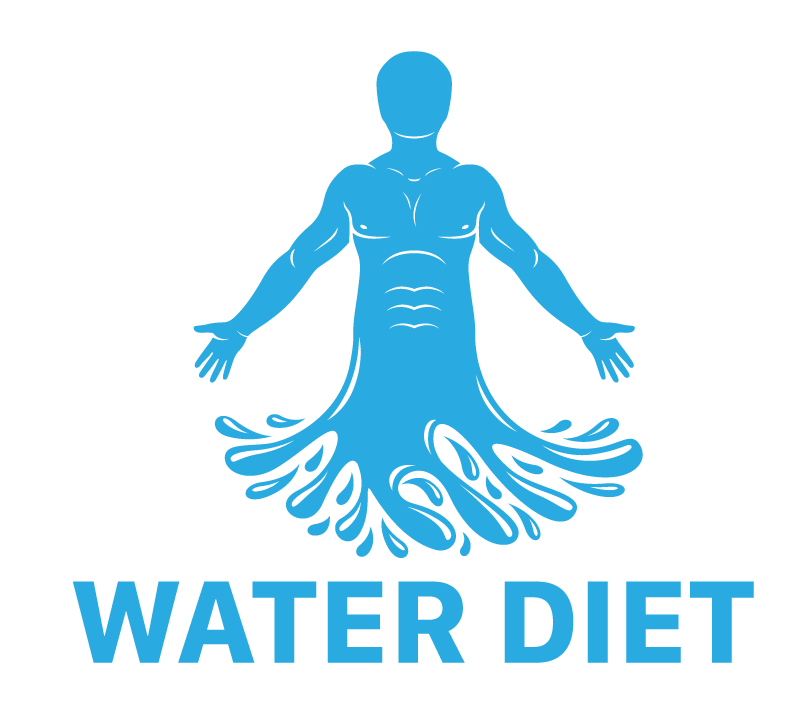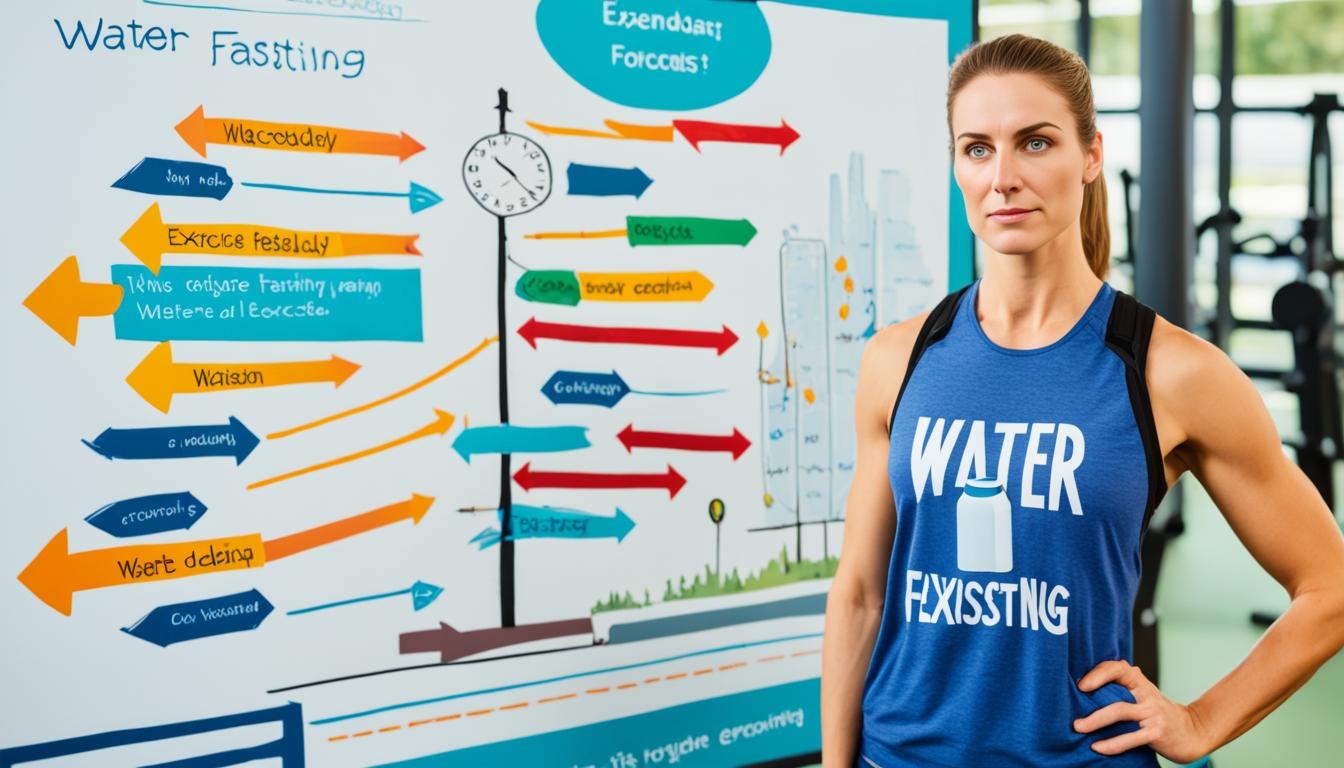Embarking on a journey to improve health and well-being can lead many to the practice of water fasting. This method, entailing voluntary abstinence from food and sometimes drinks, extends beyond its historical and spiritual roots, becoming a modern ally in the pursuit of weight management and mental clarity. But introducing workouts into this equation presents a delicate matter. The benefits of water fasting are manifold, yet when one combines it with exercise, the balance between deriving its advantages and ensuring safely negotiated health parameters becomes paramount. Understanding this intricate balance is key to leveraging the profound benefits that water fasting can afford.
Key Takeaways
- Water fasting requires careful planning, especially when incorporating exercise into the regimen.
- Balancing health during a fast is crucial to reap the full benefits of water fasting while staying active.
- A clear understanding of one’s physical responses to fasting and working out ensures a beneficial and safe experience.
- Recognizing the signs the body provides during fasting can help tailor an effective workout that complements the fast.
- The strategic timing of exercises during fasting is essential for maximizing fat oxidation and maintaining muscle health.
- Staying well-informed on the subject can lead to better decision-making regarding the integration of fasting with physical activity.
Understanding the Basics of Water Fasting
As an approach to holistic wellness and weight management, water fasting is gaining traction among health enthusiasts and those seeking to reduce disease risk. By shedding light on the fundamental aspects of water fasting, individuals can make informed decisions about incorporating this practice into their lifestyle. Delving into its definition, biological effects, and health implications enables a comprehensive understanding of water fasting’s role in today’s wellness landscape.
Defining Water Fasting and Its Popularity
The definition of water fasting involves voluntarily abstaining from all food, and in some iterations, drinks, except water. The pursuit of health improvements, detoxification, and weight management has catapulted water fasting to popularity. It signifies a commitment to health that aligns with the minimalist dietary approach many are now embracing.
Entering a Fasted State: The Biological Process
Transitioning into the fasted state occurs when the body exhausts its immediate glucose reserves and begins to metabolize fat for energy. This state typically manifests after about 10-12 hours of fasting. The switch to fat-burning mode ushers in various metabolic adaptations that can boost overall health and vigor.
Insulin Levels and Disease Risk Reduction
One of the remarkable outcomes of entering a fasted state is the significant decrease in insulin levels. This hormonal shift is conducive to disease prevention, particularly for metabolic disorders such as diabetes and prediabetes. The correlation between controlled insulin levels and lowered disease risk underscores the therapeutic potential of water fasting.
Exploring the Benefits of Exercising While Fasting
Fasting has long been recognized for its potential health benefits, and when coupled with exercise, the impacts can be even more profound. Engaging in physical activity during periods of fasting is seen not only as a weight management strategy, but also as a means to improve mental strength and overall well-being. Here we delve into the multifaceted benefits that fasting workouts can offer, from stimulating fat oxidation to enhancing convenience in one’s fitness routine.
Fat Oxidation and Weight Loss
The benefits of fasting workouts become apparent through the process of fat oxidation, a key player in weight loss and weight management strategies. In the absence of recent food intake, exercising prompts the body to turn to stored fat for its fuel, thus accelerating fat breakdown. This can lead to more efficient weight loss, as the body learns to use its fat reserves more effectively. The potential of fasting workouts to enhance this process provides an encouraging outlook for those seeking to manage their weight through combined diet and exercise approaches.
Mental Clarity and Growth Hormone Enhancement
Exercising in a fasted state isn’t just about physical benefits; it’s also a mental game. It requires a degree of mental strength as the body must push through workouts without the immediate energy from food. This fortitude carries over into other areas of life, enhancing mental clarity and focus. Furthermore, fasting workouts have been associated with increased growth hormone production. Growth hormone is essential for muscle development and recovery, and its natural increase can support better fitness outcomes and foster an enhanced fat burning process.
The Convenience Factor
For many, exercise convenience is a significant motivator to engage in fasting workouts. The time typically allocated for meal or shake preparation can be redistributed towards squeezing in a workout session, making it easier to fit into a hectic schedule. This is one of the practical benefits of fasting workouts, which streamlines one’s fitness regime without compromising on quality or effectiveness. While we certainly champion the multifaceted advantages of exercising while fasting, it is crucial to ensure that health and safety always remain the top priority.
How to Stay Fit While Fasting: Choosing the Right Exercises
Embarking on a water fast doesn’t mean you have to forsake all forms of exercise. In fact, staying active during a water fast can complement your fasting goals, provided you select appropriate fasting exercises. Let’s explore how to stay fit while fasting by choosing exercises that harmonize with your body’s current state.
During a water fast, the body’s energy reserves are conserved for essential functions and detoxification. High-intensity workouts or rigorous strength training sessions are not advised, as they could tap into muscle mass, potentially undermining the fast’s benefits. Instead, employing less strenuous, yet effective, exercises can help maintain fitness without encroaching upon the body’s healing process.
Effective options for staying active during water fast include:
- Gentle walking, which keeps the blood circulating and may aid in the detox process without overstressing the body.
- Yoga, offering the dual benefits of physical activity and mindfulness, helping to align the body and spirit.
- Light cardiovascular exercises that elevate the heart rate to a healthy level while stimulating fat oxidation.
When deciding on the best ways to stay fit while fasting, listening to your body is paramount. If you experience dizziness, fatigue, or any discomfort, it’s a sign that you should scale back or pause your exercise routine. Remember, fasting is a state that commands respect for the body’s signals and limitations.
The key takeaways for staying fit during a water fast:
- Avoid intense and demanding workouts, pivoting instead towards low-impact, restorative activities.
- Monitor your body’s response to exercise closely, adjusting your routine to meet its needs.
- Choose exercises that promote wellness and complement the fasting state without exhausting your energy reserves.
By incorporating these considerations into your water fasting plan, you can ensure a harmonious balance between fasting and exercise, optimizing both for a healthier you.
Does Working Out Break a Fast?
In the context of a workout routine for water fasting, individuals often question whether exercise could unintentionally break their fast. While fasting inherently changes the body’s primary energy source, integrating exercise requires nuanced consideration to optimize the fast and maintain its integrity. Therefore, understanding how physical activity interplays with the energy-utilizing processes during a water fast is essential.

Understanding How Exercise Impacts Fasting
Initiating a workout routine during a water fast surely increases energy utilization but does not necessarily break the fast. Although exercise during the water fast raises the body’s caloric deficit, striking a careful balance with exercise type and intensity is crucial. The engagement in particularly low-intensity exercises, for instance, minimizes the impact on blood sugar levels and supports the continuation of the fasting state.
The Effects on Blood Sugar and Energy Use
The pivot from relying on incoming calories to drawing from internal reserves, such as stored fats and glycogen, denotes a dramatic shift in energy utilization during fasting. Blood sugar levels are consequently intertwined with exercise, as they can be influenced by the physical activity performed during a fast. Appropriately timed and modulated exercise optimizes the body’s energy usage and ensures the fast remains uninterrupted.
| Activity | Impact on Blood Sugar | Energy Source during Fasting | Suitability for Water Fasting |
|---|---|---|---|
| Gentle walking | Minimal impact | Stored fat | Highly suitable |
| Light stretching | Low impact | Stored glycogen and fat | Suitable |
| Low-intensity cardio | Moderate impact | Stored glycogen and fat | Moderately suitable |
| High-intensity training | High impact | Stored glycogen (depleted quickly) | Less suitable |
To conclude, a workout routine for water fasting does not necessarily contradict the goals of fasting when approached with awareness. Understanding the effects of exercise on blood sugar and energy utilization allows practitioners to engage in activities that support, rather than disrupt, their fast.
The Best Workouts for Fasting and How They Benefit You
When it comes to making the most out of fasting, integrating the best workouts for fasting into your regime can significantly elevate the benefits you reap. The key lies not only in selecting exercises that are compatible with a fasted state but also in understanding how these workouts empower the body to optimize its fat-burning abilities.
Low-Intensity Workouts for Optimal Fat Oxidation
Optimizing fat oxidation is the cornerstone of any effective weight loss strategy. Engaging in low-intensity exercises during a fasting window prompts the body to enhance this process, making such workouts a central part of fat loss through exercise. Whether you’re walking, practicing yoga, or stretching, these activities serve as the foundational components for a sustainable, fat-burning workout plan.
Strategizing Workouts Based on Fasting Window
To maximize the benefits of your exercise regimen, it’s crucial to align your workout activities with the specifics of your fasting plan. This intersection of timing and exercise type ensures that the body has adequate time to switch energy sources—transitioning from glucose to fat stores—thus amplifying the efficacy of your workouts.
| Workout Type | Benefits During Fasting | Recommended Duration |
|---|---|---|
| Gentle Walking | Enhances fat oxidation, promotes circulation | 20-30 minutes |
| Yoga | Supports mental clarity, maintains muscle tone | 30-40 minutes |
| Stretching | Improves flexibility, aids in muscle recovery | 15-20 minutes |
| Light Cardio (e.g., Cycling) | Sustains energy levels, beneficial for heart health | 20-30 minutes |
By honing in on low-intensity exercises and tactically planning workouts around your fasting schedule, you cultivate an environment where fat loss and improved well-being are rightly within reach. Remember, the synergy between fasting and fitness is not just about subtraction—it’s about harmonizing these elements for an amplified health journey.
Water Fasting and Working Out: Combining Fasting and Exercise
The approach of combining fasting and exercise, particularly water fasting and working out, requires a thoughtful synthesis to foster the health benefits intended by each practice. The act of water fasting invokes a period where the body has zero caloric intake from food, which means it must rely on internal stores of energy for sustenance—including when one is engaging in physical activities.
This necessitates a carefully tailored approach to workouts that reflect an understanding of the body’s limited availability of calories during a fast. Ideally, any physical activity should complement the fasting process and not undermine it. Achieving a synergy between water fasting and working out necessitates mindful awareness of exercise timing, intensity, and type, avoiding the potential overtaxing of the body’s resources.
| Fasting Phase | Optimal Workout Type | Intensity |
|---|---|---|
| Initial hours (0-4) | None, body is adjusting | — |
| Early fasting (5-8 hours) | Gentle Yoga or Stretching | Low |
| Middle fasting (9-12 hours) | Walking or Light Aerobics | Low to Moderate |
| Deep fasting (12+ hours) | Restorative Yoga or Meditation | Very Low |
In the pursuit of a combining fasting and exercise strategy, the table above presents a guide to pairing the stages of fasting with corresponding workouts. The exercises are purposefully selected to align with the body’s energy capacity during different phases of the fast. This alignment is critical because it ensures that the efficacy of the fasting process isn’t diminished by overly demanding physical exertion, thus leveraging the combined benefits of both health practices.
Key to maintaining this delicate balance is observing the body’s signals. As you embark on low-intensity activities such as walking or restorative yoga, monitor your body’s response. Should signs such as fatigue, dizziness, or weakness emerge, it is indicative that one should curtail the workout intensity or pause the physical activity altogether.
Ultimately, merging water fasting and exercise represents a holistic approach to health, where the symbiosis of fasted states and movement can lead to enhanced fat oxidation, mental fortitude, and an impressive waterfall of health benefits. By respecting the body’s natural rhythms and nutritional needs, individuals can craft a fasting experience that is both health-promoting and sustainable.
Strategies for Effective Workout Routines During a Water Fast
Adopting a workout routine during a water fast can significantly enhance health benefits, provided careful consideration is given to workout timing and nutritional recovery. Crafting a regimen that takes the unique demands of fasting into account is crucial to maintain efficacy and safety. Below, we explore the best practices for integrating exercise during fasting periods, ensuring that your workouts align with your body’s nutritional state and recovery needs.
Selecting the Right Time for Exercise
Identifying the optimal time to exercise is a crucial element for effective fasting workouts. The most beneficial timing for physical activity during a water fast aligns closely with the body’s natural rhythm. Ideally, workouts should be scheduled around the less stringent phases of intermittent fasting to harness the full potential of available nutrients. This strategic planning ensures that energy levels are better sustained and performance can be maximized.
Nutrition: The Key to Recovery and Performance
Your body’s ability to recover after workouts and maintain performance levels throughout the fasting period hinges on proper nutrient intake. The integration of high-quality proteins and adequate hydration during eating periods enables muscle maintenance and glycogen restoration—both of which are pivotal for nutritional recovery. The table below offers a detailed perspective on aligning nutritional intake with workout scheduling for successful fasting-incorporated exercise routines.
| Fasting Period | Workout Intensity | Nutritional Focus | Recovery Strategy |
|---|---|---|---|
| Pre-fasting | Moderate to High | Whole foods with balanced macros | Hydration and electrolyte balance |
| Early fasting (0-6 hours) | Low | Primarily hydration | Monitor energy levels closely |
| Mid-fasting (7-12 hours) | Low to Moderate | Maintaining electrolyte balance | Rest and light stretching |
| Post-fasting | Moderate to High | Proteins for muscle repair, carbohydrates for glycogen replenishment | Focused on macronutrient recovery |
Adhering to a well-planned fasting workout schedule, which accounts for workout timing during fasting, sets the stage for both heightened fat oxidation during exercise and accelerated recuperation. To optimize the impact of your fitness efforts, keep these guidelines in mind and adjust as necessary to your body’s feedback during your fasting journey.
Recognizing the Potential Risks and Limitations
While the combination of fasting and exercise may be laced with multiple health benefits, awareness of the risks of fasting and exercise is equally crucial. Knowing the potential pitfalls can help individuals approach their wellness routines with caution and prepare them to adapt their fasted workouts accordingly.
When Working Out Can Negatively Affect Your Fast
Exercising during periods of fasting can present challenges that affect the quality and safety of your workout. The limitations of fasted workouts may lead to reduced performance; and in the absence of food, your body might experience low blood sugar, prompting feelings of dizziness or fatigue. Without immediate sources of energy, the body is more likely to tap into muscle tissue for fuel, which could result in muscle breakdown and lengthen recovery times.

Particular Risks for Different Individuals
Individual health considerations are paramount when fasting and exercising. For older adults and those with pre-existing health conditions, including metabolic disorders or cardiovascular diseases, the risks associated with combining fasting and strenuous exercise may be elevated. These individuals may experience more pronounced negative effects, such as acute muscle loss, dehydration, or exacerbated health conditions, which underscores the need for personalized workout plans that recognize an individual’s unique health status.
| Population Group | Potential Risk | Health Considerations |
|---|---|---|
| Older Adults | Injury from decreased performance and delayed recovery | Increased need for proper nutritional recovery post-workout |
| People with Diabetes | Hypoglycemia due to low blood sugar levels | Monitoring of blood sugar levels before and after exercise |
| Individuals with Cardiovascular Conditions | Increased cardiovascular stress | Consultation with a healthcare provider before engaging in fasted workouts |
| Those with Eating Disorders | Exacerbation of unhealthy eating patterns | Supervised exercise programs to ensure safety |
It’s essential to navigate the risks of combining fasting with exercise strategically. By considering individual health factors and the inherent limitations of fasted workouts, one can maintain a safe and effective fitness regimen that complements the fasting experience.
Adjusting Your Exercise Regime to Accommodate Fasting
When aligning your fitness goals with your fasting schedule, understanding the interaction between exercise and fasting states becomes pivotal. Adjusting your workout for fasting not only helps in maintaining your exercise effectiveness but also in safeguarding your health. The following sections delve into the nuances of glycogen replenishment post-workout and consider the various fasting types to harmonize with your exercise alignment for an optimized regimen.
Replenishing Glycogen Stores Post-Workout
During fasting, glycogen stored in the body serves as an immediate energy source for exercise. A keen understanding of glycogen replenishment is essential, particularly after a workout, to ensure rapid recovery and sustained energy levels. Post-workout, it’s integral that the body’s glycogen stores are efficiently restored—this is vital when transitioning from a fasting state back to regular eating intervals. This process not only refuels the body but also helps prevent potential muscle catabolism, facilitating continued progress towards fitness goals.
| Exercise Type | Impact on Glycogen | Post-Workout Fasting Recovery Needs |
|---|---|---|
| Aerobic (Low-intensity) | Moderate Use | Hydration, moderate carbs/protein intake |
| Strength Training (High-intensity) | High Use | Enhanced carbs/protein intake for muscle recovery |
| Yoga/Stretching (Low-intensity) | Low Use | Light carb intake with adequate hydration |
Considering Types of Fasting for Specific Exercises
Not all fasting types work harmoniously with every exercise regimen. Time-restricted feeding, 24-hour fasts, and intermittent fasting each come with their own specifications and allowable caloric intakes—which is why particular attention must be given when aligning these fasting types with corresponding exercises. High-intensity workouts, for instance, are generally less suitable for a 24-hour fast due to their high energy demands and potential muscle wasting. Conversely, low-intensity exercises such as walking or yoga might be better suited during such fasting types, as they align more aptly with the body’s reduced caloric resources.
| Fasting Type | Recommended Exercise | Intensity Level |
|---|---|---|
| Time-restricted feeding | Heavy strength training or HIIT | High |
| 24-hour fast | Gentle yoga or walking | Low |
| Intermittent fasting | Moderate aerobic activities | Moderate |
By carefully adjusting your exercise regime and considering the type of fast you’re embarking on, you create a supportive environment for both your fitness aspirations and your fasting practices, ensuring you stay on a path toward optimal health and well-being.
The Impact of Fasting on Muscle Mass and Recovery
Intermittent fasting and other forms of this practice have risen to prominence, often regarded for their weight management potential. Yet, there’s a pervasive apprehension about the impact of fasting on muscle mass and recovery. Concerns circle around speculative narratives suggesting that abstaining from eating might invite notable muscle degradation—conjectures that require demystification to uncover the truth of fasting’s relationship with muscle integrity.
Protecting Muscle During a Fast: Facts vs. Myths
Debunking muscle loss myths starts with an understanding of the body’s adaptive mechanisms during fasting. Contrary to the worry that muscle mass suffers a significant decrease, fasting-induced hormonal responses, such as elevated HGH levels, play a protective role. This natural uptick in growth hormone not only contributes to preserving lean muscle but may also accelerate the burning of fat. By dissecting these facts from pervasive myths, individuals can approach fasting with greater confidence in their body’s capability to safeguard muscle mass.
Recovery Post-Fast: How It Differs
The period following a fast ushers in a unique opportunity for fasting muscle recovery, where the body enters a rebuild and restoration phase. Recovery post-fast hinges on strategic nutritional intake that capitalizes on the heightened HGH levels, enabling not just the recuperation but potential bolstering of muscle strength and volume. As one’s system readjusts, careful refeeding accompanied by appropriate exercise regimens can significantly amplify fasting’s revitalizing effects on muscle recovery and overall health.




